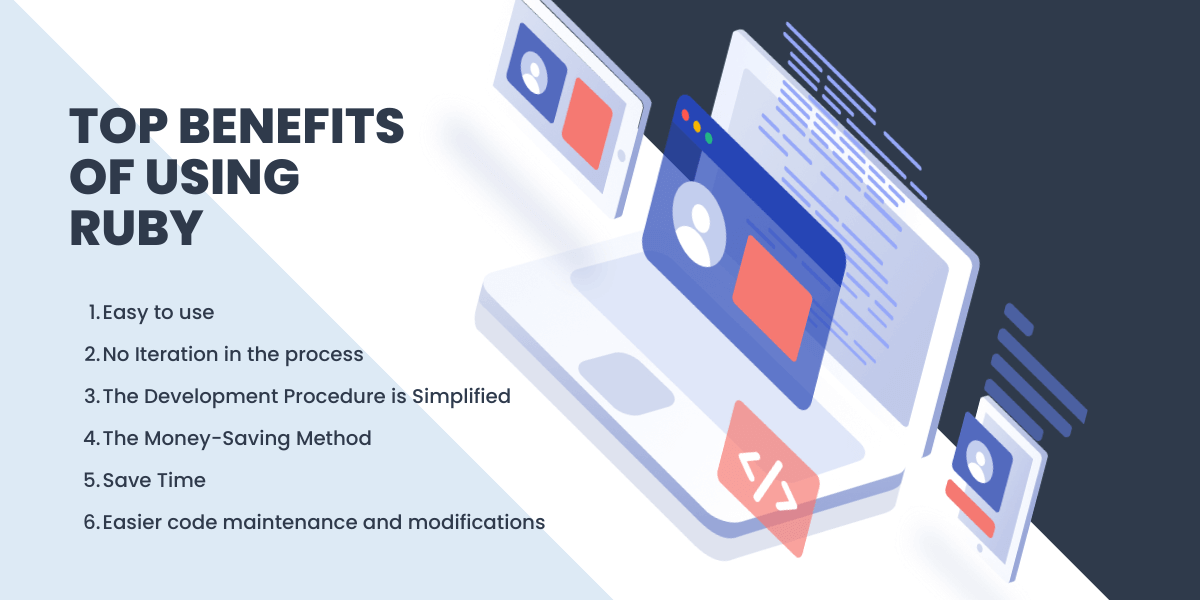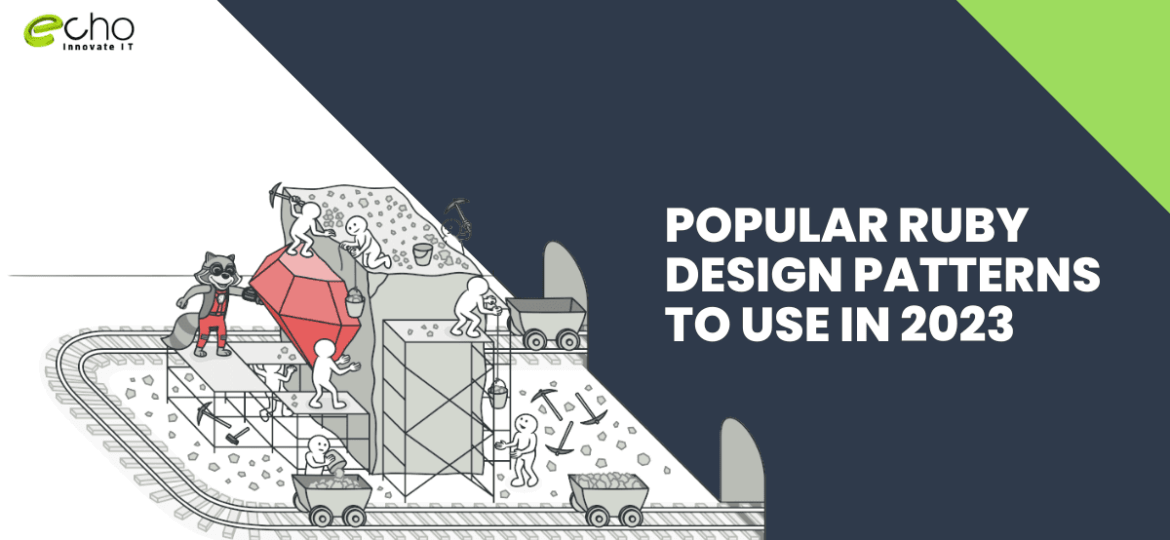Top Ruby Design Patterns for Modern Web & Mobile Apps
As mobile apps (iOS apps, Android apps) and web platforms grow ever more sophisticated, Ruby and Ruby on Rails remain strong choices for many B2B and B2C projects—particularly when scalability, maintainability, and clean architecture matter. Whether you’re building an API backend, a full-featured Rails web app, or integrating with mobile app clients, using the right design patterns can make your code more reliable, easier to maintain, and future-proof for trends like AI integration, microservices, cloud-native deployments, and mobile performance.
What Are Design Patterns & Why They Matter
Design patterns are proven solutions to recurring problems in software design – reusable strategies that help developers build systems that are maintainable, testable, and scalable. For mobile app backends (supporting Android apps and iOS apps), Ruby design patterns provide consistency, cleaner APIs (REST/GraphQL), and better structure as apps grow in complexity. With the rise of microservices, serverless, and AI/ML features, patterns that enforce separation of concerns and single responsibility become more critical than ever.
Key Ruby Design Patterns to Use
Here are the top Ruby/Rails patterns you should know, especially when building app-backends, web dashboards, or integrating Ruby services with Android or iOS frontends.
Service Objects
Break down business logic into separate service classes. Ideal for tasks like payment processing, data import/export, or handling complex flows triggered by your mobile app (e.g. in-app purchase validation). Service objects help keep controllers thin, improve testability, and isolate logic for Android and iOS API endpoints.Query Objects / Repository Pattern
When your data access logic becomes complex (e.g. filters, scopes, joins), use query objects or repository layers to encapsulate database queries. This helps with performance (e.g. avoiding N+1 queries) which matters for mobile users who need fast responses.Presenter / View Objects (Decorators / View Models)
For rendering or preparing data for iOS/Android clients or web dashboards, presenters decouple view logic from models. Decorators or ViewModels help keep serializers or APIs clean, especially when customizing JSON responses for mobile apps.Policy Objects / Authorization Patterns
Use gems like Pundit or custom policy objects to handle permissions in a structured way. For mobile apps (Android / iOS), this ensures secure endpoints and consistent authorization logic across app clients.Builder Pattern
Useful when constructing complex objects with many optional parameters—for example, assembling complex JSON responses or configuring API responses for mobile clients. Also helpful when you have many variants (free version vs premium features, etc.).Interactor (Use Case) Pattern
Organize business logic as interactor/use-case objects, especially for flows that have multiple steps (validation, external API calls, background jobs). Perfect for mobile app features like user onboarding, subscription workflows, or synchronizing data in background tasks.Observer / Event-Driven Pattern
Use observers or event broadcasting (e.g. via ActiveSupport::Notifications, or EventBus) to decouple side-effects from core logic. Great for features like push notifications (iOS/Android), analytics events, or auditing.Value Object / Immutable Objects
Represent domain values in immutable objects, e.g. Money, DateRange, or localized strings. Enhances clarity, prevents bugs, and works well in Rails + mobile clients by standardizing serialization/deserialization.Form Objects / Validation Objects
When input comes from mobile apps or web forms with complex validation rules (multi-step forms, different validation per user role), form objects help organize that logic outside of models or controllers.Decorator / Adapter Patterns
Adapter pattern helps when integrating with third-party services/APIs (say a payment gateway or external auth). Decorators wrap existing objects to add behavior without altering their interface.
How These Patterns Support Mobile & App-Centric Workflows
API Performance & Responsiveness: Patterns like Query Objects and Value Objects help reduce load times for Android and iOS apps by minimizing database load and serializing efficient data.
Security & Authorization: Policy Objects ensure endpoints used by mobile apps enforce correct permissions, reducing risks of leakage or misuse.
Scalability: Service & Interactor patterns help in scaling backend services (microservices, serverless) and in deploying reliably on cloud platforms.
Maintainability & Testability: Clean code structure means faster development cycles, easier updates, bug fixes, and better onboarding for engineering teams.
Integration with AI / Machine Learning: As mobile apps increasingly consume AI or ML-driven features (recommendations, personalization), design patterns that separate concerns make it easier to evolve those subsystems without disrupting core app logic.
Benefits & Trade-Offs
Benefits:
Cleaner, more modular code that supports rapid feature development for Android/iOS clients.
Easier to maintain and test; less technical debt.
Better performance and scalability, especially under heavy usage or with cloud-hosted back ends.
Consistency across teams—helpful when multiple engineers work on overlapping features.
Drawbacks:
Over-engineering for small or simple apps can add unnecessary complexity.
Requires that team members understand and agree on pattern usage; onboarding is key.
Some patterns introduce boilerplate (e.g. many small files), which needs good project organization and automated tooling (linters, code generation).
Modern Usage Examples
A Rails API server providing JSON endpoints for both Android and iOS apps, using Service Objects and Query Objects to power features like real-time chat or location-based services.
Using a Decorator / Adapter to integrate with OpenAI API or other AI/ML microservices, where raw model responses need to be molded into mobile-friendly formats.
Employing Interactor / Use Case pattern for subscription management (billing workflows, validation of purchases in mobile apps).
Using Observer/Event Bus pattern to trigger push notifications (iOS via APNs, Android via FCM) when certain events occur (user signup, order status changes).
What Are Design Patterns?

A pattern is a solution to a common issue in software engineering that may be utilized repeatedly. The design represents a best practice in the field of software engineering. Patterns have their anti-pattern counterparts in software engineering, but more later.
A design pattern is a collection of guidelines for creating efficient, readable Code. Design patterns like this make it easier for other developers to comprehend the system’s operational logic. Ruby design patterns are substantial chunks of Code that minimize complexity by integrating principles and best practices. Business logic and algorithms may be transmitted via design patterns.
Some Considerations For Using Design Patterns
The following are some of the architectural improvements that may be made with the proper use of ruby design patterns:
- The software development process may be accelerated using well-designed and proven patterns.
- In addition to minimizing the number of problems that aren't evident at an early stage of development, design patterns also aid in avoiding problems that may become more apparent in the future.
- Without design patterns, adding new features or supporting additional use cases in the Code is harder.
- Code that documents itself and is easy to understand may be achieved by following some basic architectural guidelines. It will be easier for developers outside the creative process to adhere to the guidelines.
Top 10 Ruby Design Patterns

Service Objects
Plain Old Ruby Objects, or Service Objects, are used to break down large computations and other business logic into more manageable classes and methods. This is a typical design pattern in the Ruby on Rails framework.
View Objects (Presenter)
Rails View Objects let us encapsulate any functionality related to views, which helps maintain order in our models and theories. View objects are an excellent example of a testable Rails pattern since they are just classes. We can utilize a Rails helper to handle the calculating logic, but if the Code is too complicated, we should switch to the Presenter instead.
Query Object
Query Objects allow us to modularize and re-use our query code without requiring changes to our Controllers or Models. As its name suggests, query object classes partition the reasoning behind database queries.
Decorators
Rails decorator is another typical ruby design pattern in rails. Decorators are a design pattern that lets new behaviors be dynamically added to objects without affecting how other instances of that class act. Decorators are a powerful tool for organizing the view and controller code in a Ruby on Rails application.
To extend an object’s capabilities, the Decorator pattern wraps it in a second object that contains expanded functionality. This is useful for adding new functionality to an existing class instance without declaring new static subclasses.
Value Object
Small, straightforward objects are promoted by the Ruby pattern known as the Value object, which also facilitates comparisons between objects using the specified logic or a set of characteristics. It’s a value representation, but it’s not a user object, which is something unique to your system. Whenever you ask for a result from a Value Object, you will only get a value back.
Observer
This pattern communicates the occurrence of an exciting event to other relevant objects through the transmission of notifications. In the event of a change in an observer’s state, an update is sent to all other observers of the item being watched.
Interactor
An interactor design pattern will be helpful here since it simplifies the process of lengthy decomposing jobs into more manageable subtasks that all rely on one another. As soon as an error occurs, the flow will terminate, and an error notice will be shown.
Form Object
All the logic for checking data and saving it is included in a form object. Therefore, the form unit is reusable throughout the codebase, and the functionality is separated from the views.
As a method and a technique, a design pattern helps developers make better programs. These patterns may be used in various situations, depending on how developers first determine them.
Therefore, we have provided a brief set of guidelines for determining whether Form Objects are warranted:
v Multi-type resource impacts are more common than single-type ones. Controllers and models in Rails are often developed using a unified set of tools. Form Objects is recommended when the business logic calls for the initialization and manipulation of many resources. When we talk about anything being “affected,” we’re referring to its creation, update, destruction, or a simultaneous mix of these three actions.
There is a high need for bespoke logic validation. Typically, resources like models already have assurances, such as requiring that specific properties are not nil or meet certain circumstances (greater than 0, a particular pattern, or a pattern).
Builder
The Builder pattern makes it easy to build sophisticated things from scratch. We’ll refer to it as an Adapter whose primary goal is to simplify the process of instantiating objects. The Builder pattern is helpful if the complexity of a highly customized product must be dealt with, as it helps to streamline the process of developing the core idea. It makes the ability to grasp the basics of intricate building methods possible.
Policy Object
The Policy object is very much like the Service object, with the vital distinction being that the Policy object handles reading while the Service object takes the writing. We utilize the cancan or pundit gem for authorization in Rails if the application’s complexity is modest; if it’s high (in terms of charge), we switch to the more powerful policy object.
Top Benefits Of Using Ruby

Easy to use
Eliminating the setup by the convention saves developers a great deal of time and energy. Because of the framework’s innate intelligence, programmers need not sweat the finer points of the configuration files; it already understands what the developers are up to and how things should be done. Now that the coding process takes less time and effort, developers may shift their attention to other aspects of the program without sacrificing quality.
No Iteration in the process
Whenever the same feature or piece of data is used again in the development process, the system adapts to your needs and removes the extraneous copy. There won’t be any need for changes, and the software development cycle will be free of bugs. Particularly useful for elaborate websites, where repetitively implementing the same features would be a nightmare if not for this handy tool.
The Development Procedure is Simplified
Ruby on Rails reduces development time by 25-50% compared to other popular frameworks. If you have a professional working on your project’s MVC, it may be ready to launch in a matter of hours.
It is not just the Model-View-Controller (MVC) architecture but also the object-oriented features, such as the leaner code base, the open-source Code that is extensive and modular in design, and the Rails community’s vast collection of in-built plugins, that contribute to the framework’s ability to speed up the web development process. When working with a robust infrastructure, developers don’t have to write all the Code themselves, saving them time and money.
The Money-Saving Method
Investing will never be an issue whether you’re a developer or a company owner. Working with Ruby on Rails allows for significant savings in this area. The framework is open source and free, while Linux is also an option. As a result, the developer’s workload is reduced even more. To save a lot of money, switch from utilizing Microsoft Windows and Java on your projects to Linux and Ruby.
Easier code maintenance and modifications
We have discussed how much more straightforward and stable Ruby on Rails applications are. Changes to the code are less work, and so are additions of new features to the site. Although this is ideal for large-scale endeavors, it is also suitable for preliminary work and smaller tasks.
The Downsides Of Using Design Patterns
Design patterns may seem to be the most crucial aspects of software development, yet they have a price. Potential drawbacks of using design patterns include the following:
- Uses Up Knowledge Everyone working on a group project that employs design patterns should be familiar with the patterns that will be used. The team's already heavy workload has been increased.
- Design patterns are meant to constrain your thinking to a small, predetermined set of strategies for creating software. This often stifles an engineer's ability to think beyond the box when solving complex challenges.
- Design patterns are most useful for large-scale projects that need many lines of Code. When working on a smaller scale, adhering to design patterns is essential to avoid adding extra boilerplate.
Conclusion
There are other design patterns in Ruby, but the 10 are the cornerstones of the framework. You can opt for the best mobile app development services using frameworks like Rails. The resulting improvements in speed, safety, maintainability, and resilience are substantial. Are you looking for custom ruby on rails development services? Echoinnovate IT can help you with the most talented Ruby on rails developers and programmers. Connect with us now at Info@echoinnovateit.com to get a free consultation and a quote.
FAQs
Why should you use Ruby on Rails?
Rapid development with its standards and libraries, manageable and scalable code, a prominent and active community, and security features are just a few of the advantages Ruby on Rails provides for web development. The RoR framework is built on the MVC design pattern, simplifying the development and upkeep of even the most complex online applications. It’s used for many websites, including online stores, CMSs, and social networks.
Nowadays, who should use ruby on rails?
Online developers looking to build a robust, scalable, and user-friendly web project should choose Ruby on Rails. It’s perfect for developing a dependable and effective online solution for small to medium-sized enterprises.
Can Ruby on Rails be useful for businesses and individuals?
As an open-source framework, it may help people and businesses save expenses, enhance productivity, and expand their online presence. The powerful features, extensive library, and active community of Ruby on Rails make it ideal for developing cutting-edge web applications.



